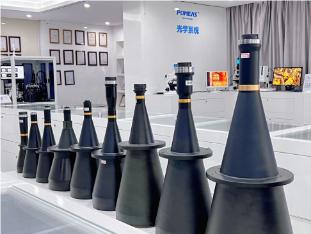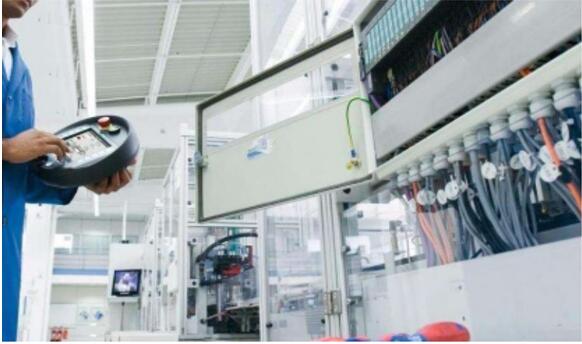Industrial Background


In numerous fields of modern industrial production, such as electronics manufacturing, automotive component inspection, and semiconductor packaging, the demand for high-precision, distortion-free imaging of objects is increasingly prominent. Industrial telecentric lenses, with their unique optical design, effectively eliminate image distortion caused by changes in viewing angle—a common issue with traditional lenses—making them essential components for achieving precise measurements and high-quality imaging. Faced with the wide variety of industrial telecentric lenses available on the market, making the right choice presents a challenging task.
Types of Industrial Telecentric Lenses


(A) Classification by Optical Path Design Principle
1. Object-side telecentric lens: Through a specialized aperture diaphragm configuration, the aperture diaphragm is positioned at the object-side focal plane. This design ensures that the principal rays remain perpendicular to the object surface regardless of its position within the field of view. Consequently, it guarantees uniform illumination across all parts of the object during imaging, significantly reducing shadow and reflection variations caused by differing illumination angles, thereby enhancing image quality stability.
Ideal for scenarios requiring precise observation and measurement of object surface features, particularly under coaxial illumination conditions, it delivers clear, consistent surface detail images. It excels in applications such as scratch detection on metal surfaces and surface defect inspection of plastic components.
2. Image-side telecentric lens: The aperture diaphragm is positioned at the image-side focal plane. The primary advantage of this design lies in its ability to control the beam divergence angle at the image plane, ensuring imaging rays remain nearly parallel to the optical axis. This significantly reduces image distortion caused by aberrations, particularly minimizing distortion in peripheral areas. This is crucial for applications requiring high-precision dimensional measurement, as reduced distortion translates to more accurate measurement results.
Widely used in two-dimensional dimensional measurement of precision components, such as measuring length, width, diameter, and other parameters of machined parts. In these applications, accurate dimensional data is vital for product quality control, and image-side telecentric lenses provide reliable measurement assurance.
3. Double-Apochromatic Lenses: Combining the advantages of both object-side and image-side apochromatic correction, these lenses ensure perpendicular incidence of primary rays at the object side while achieving collimated output at the image side. This dual-assurance design minimizes aberrations and distortion throughout the imaging process while better accommodating complex lighting conditions to deliver high-quality images.
Commonly employed in high-end applications demanding exceptional imaging quality and measurement precision, such as internal structure inspection of aircraft engine blades or cavity inspection of precision molds. In these scenarios, even minute errors can lead to severe consequences, and dual-parabolic lenses meet stringent quality inspection standards.
(B)By Focal Length Range
1. Fixed-focus telecentric lenses feature a fixed focal length, offering a simple and compact structure with relatively low cost. Due to their fixed focal length, they deliver optimal imaging performance—including sharpness, resolution, and depth of field—at specific working distances.
They are suitable for single-task scenarios with relatively fixed working distances and high imaging quality requirements. For example, at specific workstations on automated production lines where only stable inspection of fixed-size workpieces is needed, fixed-focus telecentric lenses offer excellent cost-performance.
2. Zoom telecentric lenses can continuously adjust their focal length within a certain range through an adjustment mechanism, providing strong flexibility. Users can adjust the focal length based on actual conditions to accommodate varying working distances and field-of-view requirements, enabling multiple shooting tasks without lens replacement.
Ideal for multi-variety, small-batch production models or scenarios requiring imaging of objects at different distances and sizes on the same equipment. For instance, R&D laboratories frequently test and analyze samples of diverse sizes and shapes. Zoom telecentric lenses allow rapid adjustments to specific needs, enhancing workflow efficiency.
Key Considerations for Selecting Industrial Telephoto Lenses
1. Core Needs Matching
✅ Task Type: For 2D measurement, prioritize image-side telecentric lenses (low distortion); for appearance inspection, object-side telecentric lenses are optional.
✅ Working Distance and Field of View: Use fixed-focus lenses for fixed distances; Select zoom lenses for flexible adaptation across multiple scenarios, ensuring coverage of the largest dimensions of the target object.
✅ Accuracy Grade: High-precision scenarios (e.g., microelectronics) require ≤0.1% distortion + high resolution; standards may be appropriately relaxed for general inspection.
2. Key Optical Parameters
🔹 Distortion rate: Directly impacts measurement error; must be strictly controlled for high-precision tasks.
🔹 Resolution: Determines detail capture capability, balancing pixel density with data processing costs.
🔹 Depth of field: Select based on object height differences; flat items do not require a large depth of field.
🔹 Numerical Aperture : Affects brightness and depth of field. Can be relaxed in bright environments, but requires a higher NA in low-light conditions.
3. System Compatibility and Environment
🔌 Interface Protocol: Compatible with camera interfaces (C/CS mount). Smart lenses must support communication protocols (RS232/USB/Ethernet).
🌡️ Environmental Adaptability: High-temperature environments require heat dissipation design; humid conditions necessitate anti-mold treatment; vibration scenarios demand enhanced structural stability.
Product recommendation
TECHNICAL SOLUTION
MORE+You may also be interested in the following information
FREE CONSULTING SERVICE
Let’s help you to find the right solution for your project!


 ASK POMEAS
ASK POMEAS  PRICE INQUIRY
PRICE INQUIRY  REQUEST DEMO/TEST
REQUEST DEMO/TEST  FREE TRIAL UNIT
FREE TRIAL UNIT  ACCURATE SELECTION
ACCURATE SELECTION  ADDRESS
ADDRESS Tel:+ 86-0769-2266 0867
Tel:+ 86-0769-2266 0867 Fax:+ 86-0769-2266 0867
Fax:+ 86-0769-2266 0867 E-mail:marketing@pomeas.com
E-mail:marketing@pomeas.com
